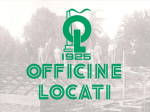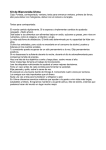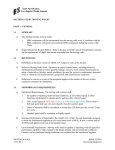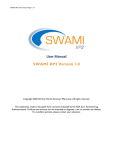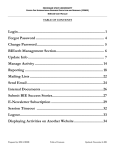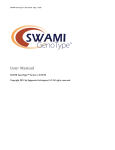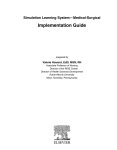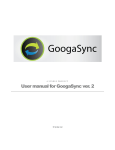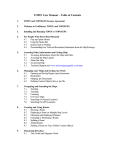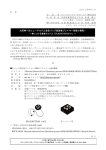Transcript
6 MONITOR September 13, 2007 News Professor explores genetics through time By Andrew Cavette Staff writer The slide showed a scraggly stretch of desert in Ethiopia. Professor Mark Barnby darted back and forth between his laptop and the front of the stage. “If you’re looking for Eden,” he commented, “this might be it.” The semester’s first Brown Bag Science Seminar, held last Friday, drew a near-capacity crowd. According to Math, Science and Technology coordinator Yvette Niccolls, the first Brown Bag of the semester typically does not have high attendance. After Barnby gave his lecture on mitochondrial DNA, however, Niccolls looked back at the departing audience. “The house was packed,” she said, beaming. Though not every seat in Room 2133 was filled, one certainly would have had some toes left over counting the empty chairs. Niccolls attributed the surprisingly large turnout to both Barnby’s personal animation and the topic itself. Molecular anthropology, the study of human migration by the tracking of genetic markers, crosses over many different fields. The topic has “not only scientific interests, but also religious ones,” Niccolls noted. Barnby’s lecture covered a string of scientific fields from the study of fossil records and archeological data to the anatomy of human sex cells and DNA sequencing; all with the daunting yet fascinating task of finding out where our ancestors went when they left the house, 50,000 years ago. We are able to track the maternal lineage of the human species because, as Barnby notes in his lecture, “the copy machine is not perfect... mistakes are made.” These mistakes are genetic mutations and these mutations are passed to new generations on the mitochondrial DNA. When a group is separated for long enough, say by migrating slowly along the coast of India for several thousand years, they lose ties with the original population. This new population begins to breed within their large, separated group, isolating themselves genetically. When this happens, scientists can look for mutations specific to that population, called genetic markers, and follow those markers as people spread across the continent. According to Barnby, though “Mitochondrial Eve,” an African woman who lived 150,000 years ago, was not the only woman alive at that time, “everyone on Earth today has her mitochondria.” Until very recently it was believed the various pockets of older species of the genus Homo evolved into their modern geographical equivalents, older species of Homo in Asia simply evolved into the Homo sapiens of Asia while older species of Homo located in Europe likewise would have changed into the Homo sapiens of Europe. In the last five or 10 years, molecular anthropology has suggested this may not be true. The data which has been collected so far shows that perhaps the older species of the genus Homo were slowly displaced by the ever encroaching Homo sapiens, relatives of Mitochondrial Eve. This displacement would have been far-reaching and slow moving as her extended family made their way into all corners of the continent, as well as over the Bering land bridge into the Americas. They know if you’ve been bad or good...within 21 days Continued from Page 1 footage through a Wi-Fi network to officers in the field, but Osawa said this feature is not a part of the set up on campus. He noted, “any time you use a Wi-Fi system, you have issues with the security [of that system].” The police department can view recorded video no more than 21 days old. If a incident is reported after 21 days, the footage of that event will have been erased and the campus police will not be able to use it in their investigation. The reason they do not keep video archived for longer than 21 days is because of storage capacity. The video surveillance system is activated only when it detects activity. According to the user manual for the NetGuard monitoring program, what qualifies as activity can be regulated by adjusting the “Noise Sensitivity.” In this case “noise” means how much each pixel must change before it is regarded as motion. However, even with this storage saving feature, the system deals with terabytes of information. Storing this vast amount of digitized data also affects the decisions Osawa has made about the video resolution. The lower the resolution, the fewer pixels make up the final image. Most of the cameras on campus are set at a medium resolution. As with any digital camera, the further an object is from the lens, the fewer pixels are dedicated to that object in the overall image. For example: cars close by were quite clear on the computer screen in Osawa’s office, but a more distant car, though visible, had less detail. “You can tell it’s a purple van, but then what?” Osawa said. Osawa explained that if he were to select the highest resolution, the current mainframe would only be able to keep 10 days worth of footage. Osawa said he had to find a balance between resolution and storage capacity. Storage capacity is not the only feature which requires a balance between desired gear and logistical feasibility. Though all of the campus is covered under the current network of cameras, Osawa expressed his desire to have some areas covered more thoroughly (private areas such as restrooms and locker rooms do not have coverage and this will remain true). Not only would additional cameras cost more to buy, but they would require installation and maintenance, all of which would need to find a place in his approximate $790,000 annual budget. The department is responsible for the costs of vehicles and their maintenance, the cost of parts and also the officers’ wages. Additional cameras would also equate to even more data streaming into the mainframe. Osawa’s wish list also touched on the quality of the cameras already installed. The video system now utilizes a mix of IQInvision and Sony brand cameras placed throughout the campus. According to the manufactures’ website, the Sony SNC-RZ25 camera can pan 340 degrees, tilt 120 degrees and has a focal length of 4.1 - 73.8mm with an optical zoom ratio of x18. Cameras with longer focal length, higher zoom ratios and better resolution are available on the market, but Osawa is very aware that the college does not have an unlimited budget. As he pointed out, “We could have many good, reasonably priced cameras or one great one.” The cameras which are installed each cost between $300 and $500. Osawa said the higher level cameras are closer to $400,000 each. Osawa indicated that having personnel dedicated solely to monitoring live feed would be wasteful. “Think about what that does... (You would then) tie up one person to sit and watch a monitor; he or she can’t leave.” Osawa estimated you would need about four people to cover an allday rotation schedule. At entry level security wages, with health benefits, etc., that would cost close to $175,000 a year, according to Osawa’s calculations. Because personnel is always the highest cost of any department, President Doug Treadway has implemented a selective freeze on new hiring. According to Assistant to the President, Sarah Zentner all positions are being reviewed before offers are made. “It’s not that there are no new hires, but rather that all new hires are first reviewed and approved by Dr. Treadway.” Osawa said the cameras have been a benefit to the campus, but they do have limits. “Without a doubt they are a great tool,” Osawa remarked, but also indicated that some people thought the cameras would replace officers. He believes this idea is incorrect and said the cameras could never replace officers being visible around campus. Osawa said, “For the average person, even if it’s not safe, if they have the perception they are safe, then they’re happy. . .If they’re as safe as can be, but their perception is that they’re not safe, they’ll never be satisfied.” Though scientists have already collected a large number of samples, this field is relatively new. “We don’t have 6 billion samples yet,” Barnby joked. There is much work to be done, and Ohlone College is doing some of it. As part of course instruction on how to use Ohlone’s own DNA sequencing technology, Barnby and his students contribute data to a website run by the National Center of Biological Information. During the lecture, Barnby shared the results of data collected on his wife’s family who, as it turns out, were part of the first migration into Europe. He also shared the results of samples taken from Science and Technology Dean Ron Quinta, who is part of another early European migration. The PhotoShopped image of the Dean-As-Caveman made everything clear, except the audience’s tearing eyes as they recovered from laughter. When a student asked how he could track his own ancestry, Barnby told the audience about the Genographic Project Public Participation Kit which is available at the website for the National Geographic Society (https://www3.nationalgeographic. com/genographic/participate.html) According to the website, “Your results will reveal your deep ancestry along a single line of direct descent and show the migration paths they followed thousands of years ago.” After the lecture ended and most of the attendants were on their way, a small group of students congregated around Professor Barnby. Synapses alight with this new information, they each had questions or needed clarification. Most of their questions centered around one theme. A young woman in a crisp, red track jacket apologized to the others, politely pleading one last question. “I’m sorry... I know it’s selfish” she said, asking which branch of the migration Iranians belonged to. It seems people have more in common than mitochondria; No matter where they have gone, they want to go home. The next Brown Bag Science seminar will be Friday, Sept. 21 from 1 to 2 p.m. in Room 2133. It will be entitled “Wild Edible Plants” and will be about the plants the Ohlones ate. The speaker will be Professor Gessica Johnston. Campus Police Chief Steve Osawa monitors the feeds from the campus security cameras. From his control room, Osawa can adjust where the cameras point, as well as watch all 40 feeds. Photo by Daniel Yuan

